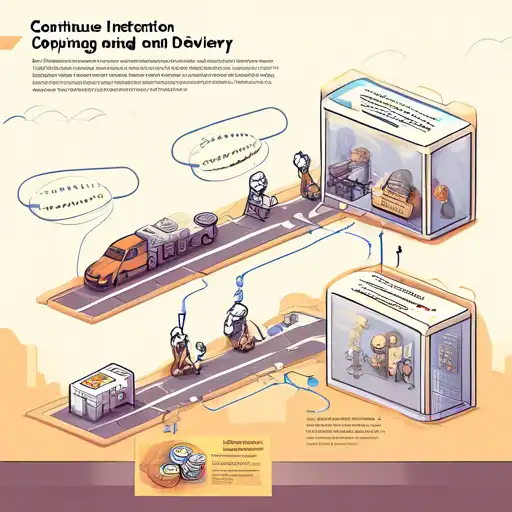What is Continuous Integration and Delivery?
Continuous Integration (CI) and Continuous Delivery (CD) are pivotal practices in modern software development, aimed at improving the speed and quality of software releases. CI/CD automates the integration of code changes from multiple contributors into a single software project, ensuring that new code does not break the existing codebase. This article delves into the intricacies of CI/CD, its benefits, and how to implement it effectively in your development workflow.
The Core Principles of CI/CD
At its heart, CI/CD is about automating the software release process to make it more efficient and reliable. Continuous Integration focuses on integrating code changes frequently, at least daily, into a shared repository where automated builds and tests run. Continuous Delivery extends CI by ensuring that the code can be released to production at any time, with the push of a button.
Benefits of Implementing CI/CD
- Faster Release Cycles: Automating the build and test process reduces manual errors and speeds up the release process.
- Improved Code Quality: Frequent code integrations and automated testing catch bugs early in the development cycle.
- Reduced Deployment Risk: By deploying smaller changes more frequently, the risk associated with deployments is significantly reduced.
- Enhanced Team Collaboration: CI/CD encourages more frequent code commits and collaboration among team members.
How to Implement CI/CD in Your Projects
Implementing CI/CD requires a cultural shift towards automation and continuous improvement. Here are some steps to get started:
- Choose the Right Tools: Select CI/CD tools that integrate well with your existing development stack. Popular options include Jenkins, Travis CI, and GitHub Actions.
- Automate Testing: Implement automated testing at every stage of the development process to ensure code quality.
- Monitor and Optimize: Continuously monitor the CI/CD pipeline for bottlenecks and optimize as necessary.
Common Challenges and Solutions
While CI/CD offers numerous benefits, teams may face challenges such as resistance to change, tool integration issues, and maintaining test coverage. Overcoming these challenges requires clear communication, training, and selecting flexible tools that can adapt to your team's needs.
Conclusion
Continuous Integration and Delivery are essential practices for teams looking to improve their software development process. By automating the integration and delivery processes, teams can achieve faster release cycles, higher quality software, and better collaboration. Start small, iterate, and continuously improve your CI/CD pipeline to reap the full benefits.
For more insights into optimizing your development workflow, check out our articles on DevOps Best Practices and Automated Testing Strategies.
